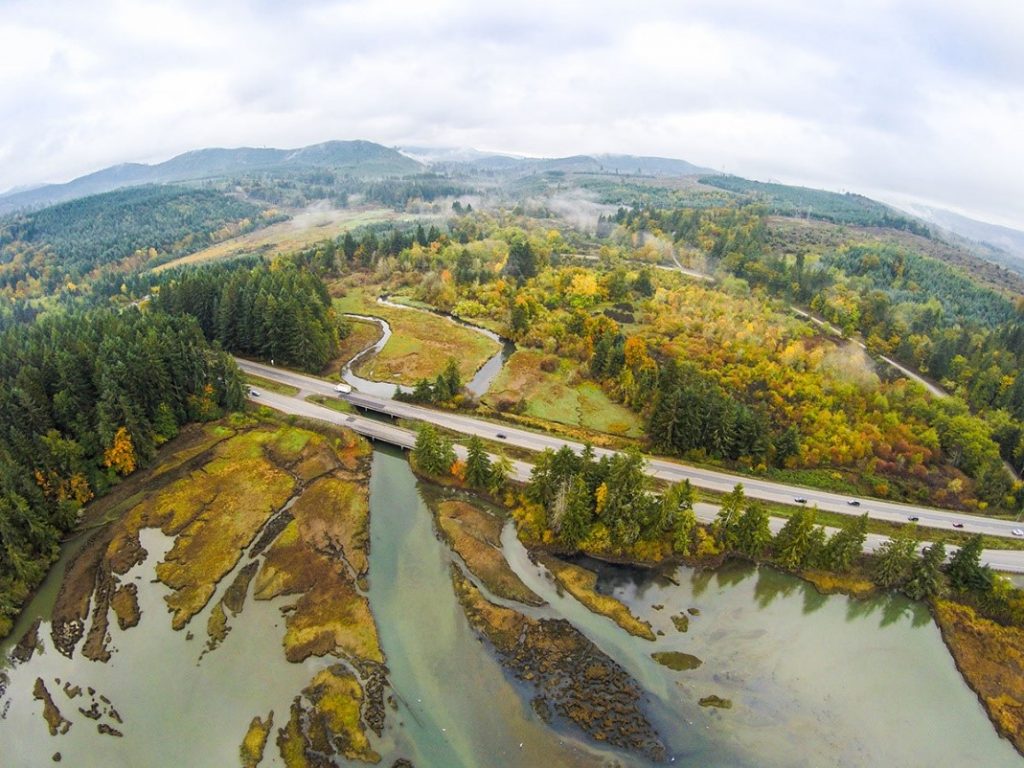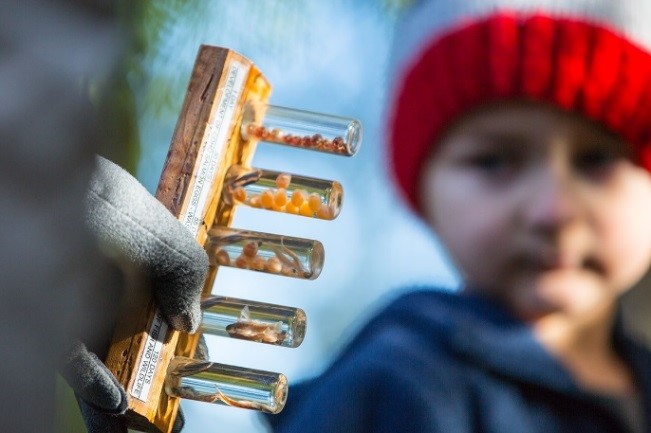WWRC would like to acknowledge that this story takes place on the traditional lands of the Squaxin and Coast Salish people. We honor with gratitude the Tribes and their land on which we work, play, learn, and organize today.
It’s hard to imagine what our favorite outdoor areas might have been like before we occupied them. But their histories are often known, if we’re open to hearing them. In the South Puget Sound between Olympia and Shelton lies Kennedy Creek, a wonderland of biodiversity. But not long ago, this area was suffering the impacts of over-fishing and habitat loss. It might have been hard to imagine Kennedy Creek as a thriving habitat that was called the “Place of Singing Fish.”
“Long before the trail we know as The Kennedy Creek Salmon Trail existed, another trail passed this way. It began in the Sawamish/T’Peeksin village, which stood near the mouth of Kennedy Creek. The villagers, ancestors of today’s Squaxin Island Tribe, knew the creek as the “Place of the Singing Fish”, called that for the multitudes of frogs that would sing along the creek on spring nights. The trail was used for gathering food, basket-making materials and hunting. The trail stretched from Totten Inlet to Summit Lake, and was part of a trail network that connected the villages of the south Puget Sound and the Pacific Coast to one another.
Millions of salmon returned to the streams each year, providing one of the most essential food sources for the people of this village, and other Puget Sound tribes. In The Place of the Singing Fish, chum were the main salmon species to spawn the creek, just as they are today. The Sawamish/T’Peeksin people built rock weirs at the mouth of the creek to catch the fish, which were then preserved by smoking. The abundant oil in the chum was utilized as a lubricant to move large logs used to build canoes and houses. The Sawamish/T’Peeksin people viewed the salmon as kin. Today’s Squaxin Island Tribe continues the traditions of their ancestors each year during the First Salmon Ceremony.”
[This story of the Place of Singing Fish is courtesy of the South Puget Sound Salmon Enhancement Group via www.spsseg.org]

Thanks to the concerted efforts of the Squaxin Island Tribe, the Taylor family (of Taylor Shellfish), the South Puget Sound Salmon Enhancement Group, Green Diamond Resource Company, Capitol Land Trust, the Western Rivers Conservancy, Department of Natural Resources, and a handful of WWRP grants, this area is once again a thriving wetland ecosystem.
Photo courtesy of RCO’s PRISM Database

Cutthroat trout, steelhead, and salmon find shelter in protected waters, and 140 species of birds rely on the surrounding area for food and migration. In fact, as many as 10,000 migratory birds have been counted in this area on a single day! But maybe most astonishing is each fall, when tens of thousands of chum salmon return and fight their way upstream to spawn in its protected waters. And as the salmon return, so, too, do the people.
Photo courtesy of RCO’s PRISM Database
In addition to the high-quality salt marsh, Kennedy Creek is also home to a variety of research and education programs. Scientists studying salmonid ecology intermingle with school groups learning about the connections between fish, marshland, and shorebirds.

Today, the Kennedy Creek Salmon Trail provides visitors with one of the best salmon-viewing opportunities in the South Puget Sound. This interpretive trail is run entirely by volunteers, who share their love of the area by maintaining and making trail improvements, guiding trail tours, educating local school groups about the ecosystem, and reminding us to listen to the history of the land.
Photo courtesy of RCO’s PRISM Database
Project Highlights
Project: Kennedy Creek Natural Area
County: Mason/Thurston
WWRP Grant Categories: Natural Areas, Riparian Protection
RCO Grant Awards: $9,467,749
Status: Project dates 2001-present
